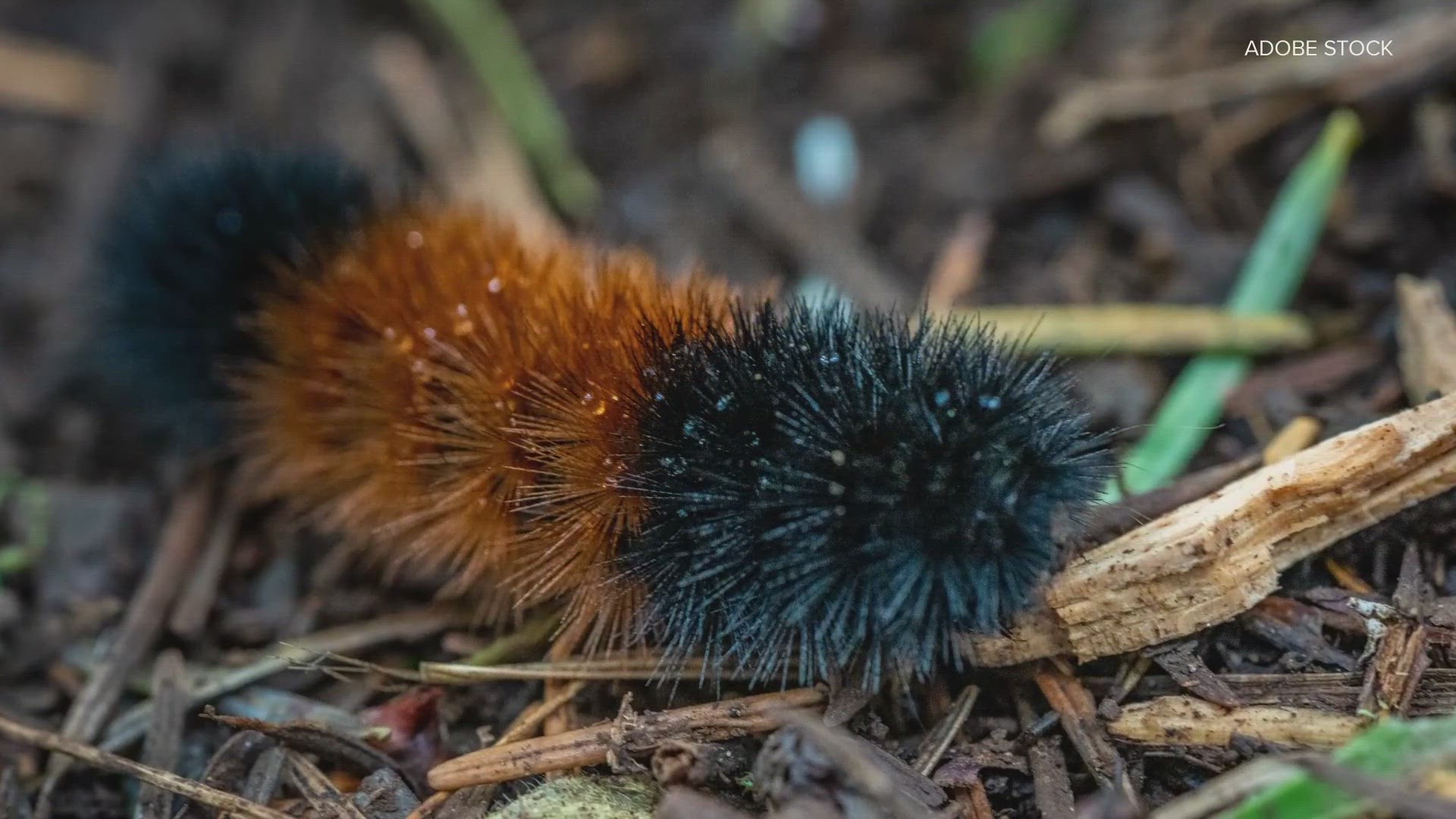CHESTERFIELD, Mo. — The past few mornings in St. Louis have teetered on sweater weather, but is it too soon to start thinking about winter? The sighting of a fuzzy creature might have you dreaming of a white Christmas instead of figuring out which Halloween candy to put out.
Some call them woolly worms or woolly bear worms.
"I think the woolly bear reminds everyone of their childhood," reminisces Tad Yankoski, senior entomologist at the Butterfly House, "because everyone spends those late summer days and early fall days playing in the grass, that's where you see the woolly bear caterpillars."
Yankoski will be the first to point out, that woolly bear worms are not actually worms at all. They're actually the caterpillars of a native moth species.
The larvae of Isabella Tiger Moths are black, brown and fuzzy all over. The cute little bug can be found all over Missouri and Illinois this time of year.
As the story from 1940s New York goes, the wider the rusty brown section on the worm, the more mild the coming winter will be. The more black there is, the more severe the winter will be.
Not to crush any dreams, but Yankoski says, "There's not too much science to this. Unfortunately, the caterpillars tend to get more brown the older they get. So if you take a caterpillar that has a little bit of brown and you wait a few weeks and if it molts, you may have a caterpillar with more brown."
While the fluffy caterpillar can't predict the weather, it is still pretty impressive.
"A lot of insects that survive the winters are very good at producing anti-freeze-like compounds," Yankoski explained. "We've actually shown that woolly worms can survive up to 90 degrees below zero."

